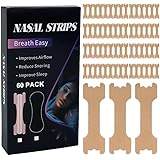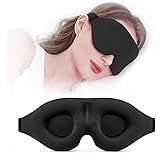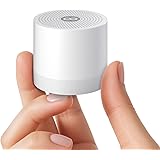The Foundation Matters: Choosing the Right Mattress Base
A common oversight when buying a mattress is forgetting about the bed’s foundation. The base you use profoundly impacts how your mattress performs and lasts. It’s not just about aesthetics; it’s about structural support and mattress longevity. Consider this: a memory foam mattress is designed to conform perfectly to your body, offering pressure relief and support. This material works best when it has a solid, flat surface beneath it. If you place a full memory foam mattress on a slatted base, especially one with wide gaps, you create problems. The memory foam, designed to mold and flex, will simply sink into the gaps between the slats. This creates uneven support for your body, leading to discomfort and potentially damaging the mattress over time. Imagine building a sandcastle on an uneven beach; it won’t hold its shape as well as one built on firm, flat ground. Instead, a flat divan base or a platform bed with a solid surface (or slats spaced no more than 2-3 inches apart) is ideal for memory foam. This ensures consistent support across the entire mattress, allowing it to perform as intended. Conversely, traditional innerspring or hybrid mattresses, with their more rigid construction, can often accommodate slatted bases, as long as the slats are sturdy and properly spaced to prevent sagging. Always check the mattress manufacturer’s warranty and recommendations for the appropriate base to ensure you’re covered and get the best performance.Don’t Be Shy: The Art of Testing a New Mattress
Many people feel self-conscious when trying out mattresses in a store. They might sit on the edge for a moment or give it a quick bounce. This is a critical mistake. To truly assess a mattress, you must interact with it as you would at home: by lying down. Sitting on a mattress, particularly one with pocket springs, concentrates all your weight in one small area. This causes the springs directly beneath you to compress deeply, giving a false impression of the mattress’s overall firmness and support. It’s like trying to judge a car’s ride quality by sitting in the driver’s seat while it’s parked; you need to take it for a test drive! When **buying a new mattress**, you need to lie down across it, allowing your body weight to be dispersed evenly. This activates the entire support system of the mattress, whether it’s pocket springs, foam layers, or a combination. Spend at least 10 to 15 minutes on each mattress you consider, trying out your typical sleeping positions (on your back, side, or stomach). Pay attention to how your spine aligns, if there are any pressure points, and if you feel adequately supported. This personal, extended trial is the only way to genuinely determine if a mattress is a good fit for your unique body and sleep style. If you share a bed, bring your partner along to test it together, observing how movement transfers and how comfortably you both fit.Personal Comfort is Key: Not All Mattresses Suit Everyone
Just because a friend raves about their new mattress doesn’t mean it’s the right choice for you. Personal comfort and sleep habits are paramount. A mattress is not a one-size-fits-all product; what’s heavenly for one person might be a nightmare for another. A prime example is memory foam. While incredibly popular for its contouring capabilities, memory foam tends to retain body heat. As the video highlights, this material molds around your body, and in doing so, it absorbs your body temperature. For warm sleepers, this can lead to uncomfortable overheating throughout the night, disrupting valuable sleep. Imagine being wrapped in a warm blanket on a hot summer night; it’s not ideal for everyone. Fortunately, if you appreciate the pressure relief of memory foam but sleep hot, there are excellent alternatives. Latex mattresses offer a similar conforming feel but with more bounce and superior breath regulation, as natural latex is highly breathable. Gel-tex mattresses (or gel memory foam) incorporate cooling gels to dissipate heat, providing that memory foam sensation without the excessive warmth. Hybrid mattresses also offer a solution, combining the support of innerspring coils with layers of foam or latex, often leading to better airflow than an all-foam option. When **buying a mattress**, consider factors like your typical sleeping temperature, preferred firmness, sleeping position, and any specific health conditions.Price vs. Value: Decoding Mattress Costs
It’s a common misconception that the most expensive mattress is automatically the best, or that a cheap mattress is always a bad deal. The reality is far more nuanced. Price should be a consideration, but it should never be the sole determining factor in your purchase. A high price tag often reflects premium materials, advanced technologies, or luxury branding. However, these features might not always align with *your* specific comfort needs. For instance, an ultra-firm mattress made with the finest organic latex might be incredibly expensive, but if you’re a side sleeper who needs soft pressure relief, it could be the worst mattress for your body. Conversely, a more budget-friendly option might offer the perfect blend of support and comfort for you, proving to be an excellent value. Think of it like buying art: the most expensive painting isn’t necessarily the one that speaks to your soul or perfectly fits your home. Focus instead on the value a mattress offers. This includes the quality of its materials, its durability, the warranty, and most importantly, how well it supports your body and promotes good sleep. Lie on various mattresses across different price points. You might be surprised to find that a mid-range mattress provides the ideal comfort and support you need, making it a better investment than a more expensive but less suitable option. Look for sales, compare features, and read reviews, but always prioritize personal comfort over a price tag.Invest Your Time: The Importance of Thoughtful Mattress Shopping
The final, and arguably most important, piece of advice is to never make a quick buy when it comes to a mattress. This isn’t a pair of socks; it’s a significant investment in your health and daily comfort. As the video eloquently states, you spend “a third of your life lying in that mattress.” Let’s put that into perspective: * If you sleep 8 hours a day, that’s 56 hours a week. * Over a year, that’s 2,912 hours. * Given that a quality mattress typically lasts 7-10 years, you’re talking about spending 20,384 to 29,120 hours on that one surface! This substantial time commitment underscores why rushing the decision is so detrimental. You wouldn’t “tire-kick” a car before buying it; similarly, you shouldn’t treat a mattress purchase lightly. Take your time to research different mattress types, understand their benefits, and read customer reviews. Visit multiple stores to compare options side-by-side. Don’t feel pressured by salespeople; remember, you are the one who will be sleeping on it for years to come. Engage with sales associates, but ask thoughtful questions about materials, construction, warranties, and return policies. Many reputable retailers offer comfort guarantees or trial periods, which can be invaluable for ensuring you’ve made the right choice once the mattress is in your home. By dedicating sufficient time and effort to choosing the right new mattress, you’re not just buying a piece of furniture; you’re investing in years of quality sleep and overall well-being.Don’t Lose Sleep Over It: Your Mattress Buying Q&A
Why is the mattress base important when buying a new mattress?
The base profoundly impacts how your mattress performs and lasts. For instance, memory foam mattresses need a solid, flat surface to provide proper support and prevent damage.
How should I properly test a mattress in a store?
You should lie down on the mattress for at least 10 to 15 minutes in your typical sleeping positions. This allows your body weight to be dispersed evenly, giving you a true sense of its support and comfort.
Does a popular mattress like memory foam suit everyone?
No, personal comfort is key, and not all mattresses suit everyone. Memory foam, for example, can retain body heat, which might make it uncomfortable for warm sleepers.
Why is it important to take my time when buying a new mattress?
Buying a mattress is a significant investment in your health and daily comfort, as you spend a substantial part of your life sleeping on it. Rushing can lead to an unsuitable purchase that negatively impacts your sleep for years.








